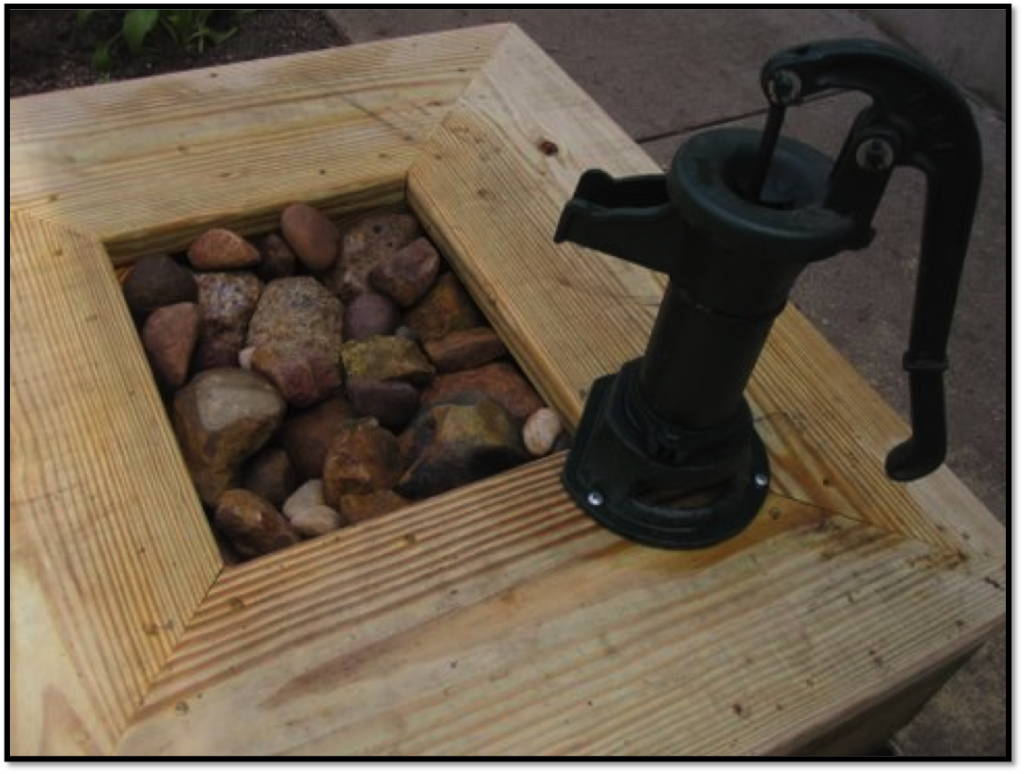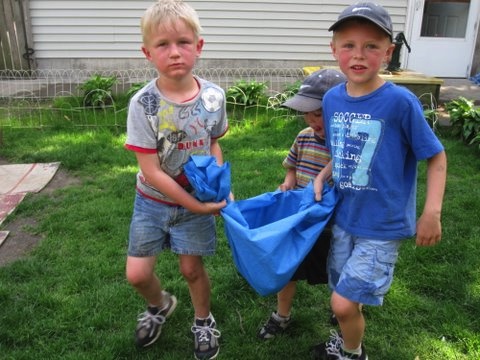STEM in the Sandbox Moat

“Will the children be kindergarten ready if they spend their days playing outside?”
As educators, we are often asked about kindergarten readiness by nervous parents who want to give their children the best possible start in life.
It’s important for parents—and educators—to understand that there are endless opportunities for deep learning when children are connected to nature. Young children learn primarily through their senses. The natural world—with its stimulating and constantly changing elements—provides the ultimate sensory learning environment.
When children explore the world through sensory play, they are actively building new neural pathways, which is crucial for brain development. When we slow down enough to observe this process, it’s easy to see the learning that takes place, and the social skills that are being developed, as the children collaborate on projects in the great outdoors.
On an unusually warm day in May, the boys in our program are busy building a large castle in the sandbox. This may look like nothing more than sandbox play, but there’s some deep learning going on here as our castle architects lay the foundation for future academic success.
“We should build a moat!” declares Joshua.
“Yeah, a moat!” agrees the gang. “We definitely need a moat!”
With these words, the digging begins. Before long, the castle builders decide that it’s time to add water to the moat. We have plenty of buckets at our center, but today most of the buckets are already in use.
Looking around for a way to transport the water from the pump to the sandbox, the boys settle on a nearby piece of fabric from one of their forts.

We’re all hot, tired and likely a little dehydrated at this point. A glance at the clock tells me that it’s almost closing time. But who am I to redirect the boys by pointing out the empty bucket next to the fence?
I watch as the boys carefully stretch the material out and center it beneath the pump spigot to catch as much water as they can. Asa begins pumping and, to my astonishment, the fabric holds the water without any leakage.
WHAT in the world? I’m marveling at this unexpected development when it occurs to me that the cloth I’d purchased from the resale shop is actually a waterproof fabric used in hospital settings.

When I ask the boys if they were aware that the fabric was waterproof when they grabbed it, they respond with a question of their own: “What does waterproof mean?”
I try to explain that waterproof means that the water will not flow through the fabric. But there are times for discussion and times for action—and the boys are already focused on the next step in their plan.
First, they gather the corners of the cloth, taking care to keep the water from gushing out the sides. Then they make their way gingerly across the yard to the sandbox and carefully place the fabric in the moat.
I realize at this point that the boys had deliberately ruled out the use of buckets because they needed a flexible, waterproof liner for their castle moat.
They had assumed that the fabric they chose would hold water and, at the same time, conform to the shape of the moat. Wow! They were way ahead of me!
The boys did eventually make multiple trips to the pump to fill some buckets and add more water to the moat. But they knew that the bucket wasn’t the best tool for the initial phase of moat construction. Silly me!

This is just another example of the importance of giving young children sufficient time to engage in deep play and problem-solving (without any interference from those of us who think we have all of the answers), as well as the importance of loose parts in creative play.
Look at the delight on their faces! Okay, so the castle architect on the far right in the photo below seems to be grimacing at the weight of the load, but the other two look pretty thrilled with the success of their mission!

When we look at children playing in sand, what are WE missing? They are busy designing, creating, collaborating and communicating. They are adding and subtracting, working with shapes and molds and inclines and declines. They are adding water to change the nature of their building material. They are using spatial awareness and math and science vocabulary. They are theorizing, hypothesizing and collecting data. They are engineering and deepening their knowledge—all while playing in a box of sand!

This is the ultimate in STEM learning. Give them as much time as they need. Let them play. Add fabric to your play centers. You never know where their outdoor play will lead them—and what YOU may learn in the process!
This is a great activity to do with children. I had not seen this activity before. Its a great way for children to work together to solve problems and work together to complete the activity.
Since we are talking about measurement we are going to see who has the tallest sandcastle
Oh my goodness! These boys really worked together to the solve problems they faced! I think the teacher even learned a thing or two by watching the boys figure out how to make the moat! Great activity!!
i love to see how they come up with the plan on their own. They saw that they didn’t have access to buckets or cups so they found another way to haul water!
I found it interesting that the children were able to analyze in this situation to figure out the best way to get the water from the pump to the sandbox to make their moat.